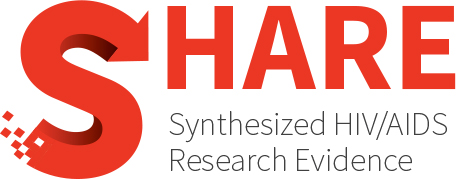Unintended pregnancy among women living with HIV and its predictors in East Africa, 2024. A systematic review and meta-analysis
Abstract
INTRODUCTION: An unintended pregnancy refers to a situation where a pregnancy occurs either when there is no desire for a child (unwanted) or when it takes place at a time that was not anticipated (mistimed). Pregnant women infected with HIV face a two to tenfold increased risk of mortality during both pregnancy and the postpartum period compared to those who are not infected. A national level cohort study has identified that about 70 babies born HIV positive, 60% of them were from unplanned pregnancy. In pregnant women living with HIV and on antiretroviral therapy, preterm birth and low birth weight have been reported. A systematic review and meta-analysis were conducted on the rate of vertical transmission of HIV in East Africa and revealed the pooled prevalence of 7.68% (ranges from 1.58–32.1%), which is far from the desired target of WHO, which is below 5%. METHODS: Appropriate and comprehensive searches of PubMed, MEDLINE, EMBASE, Google Scholar, HINARI, and Scopus have been performed. The electronic literature search was last performed on December 28/2023. All observational study designs were eligible in this SRMA (systematic review and meta-analysis). Primary studies lacking the outcome of interest, were excluded from the SRMA. The extracted Microsoft Excel spreadsheet data were imported into the STATA software version 17 (STATA Corporation, Texas, USA) for analysis. A random-effects model was used to estimate the pooled prevalence of unintended pregnancy among women living with HIV in East Africa. The Cochrane Q-test and I2 statistics were computed to assess the heterogeneity among the studies included in the SRMA. RESULT: A total of 2140 articles were found by using our search strategies and finally ten studies were included in the SRMA, comprised of 4319 participants. The pooled prevalence of unintended pregnancy among women living with HIV in East Africa was 40.98% (95% CI: 28.75, 53.20%). The finding of this subgroup analysis by study country showed that the pooled prevalence of unintended pregnancy among women living with HIV was lower in Ethiopia (28.38%; 95% CI: 15.54, 41.21%) and higher in Rwanda (62.7%; 95% CI: 58.71, 66.69%). Unemployment (AOR = 2.75, 95% CI: 1.82, 4.16), high parity (AOR = 3.16, 95% CI: 2.34, 4.36) and no formal education (AOR = 2.04, 95% CI: 1.23, 3.38) were significantly associated with unintended pregnancy among women living with HIV in East Africa. CONCLUSION: The findings of this SRMA suggest a substantial need for concerted efforts to reduce unintended pregnancies among women living with HIV. It underscores the importance of continuous and rigorous initiatives to enhance women’s empowerment, focusing on improving both employment and educational status. Additionally, all stakeholders are urged to diligently implement the WHO recommendations, particularly emphasizing a four-pronged approach to a comprehensive PMTCT strategy and the prevention of unintended pregnancies.
Authors
Lake ES, Ayele M, Alamrew A, Tilahun BD, Erega BB, Zemariam AB, Kumie G, Yilak G
Year
2024
Topics
- Population(s)
- Women
- Prevention, Engagement and Care Cascade
- Prevention
- Prevention
- Sexual risk behaviour
